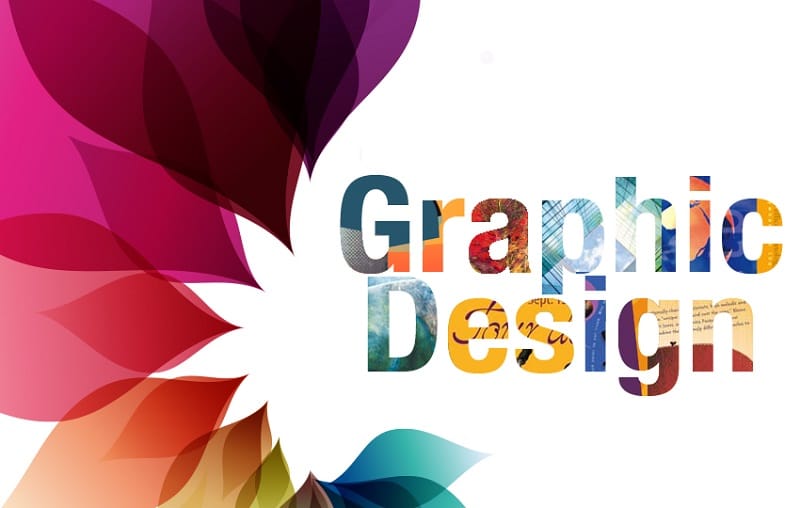Beginners Guide to Graphic Design

Is it your dream to become a graphic designer? If you have an eye for design and a flair for technology this creative field might be a great fit for you.
But how to get started? Here we look at eight quick-start tips for beginning a new career in graphic design. You’ll also find our edit of the best beginner tutorials and sources of inspiration to get you started on the right footing.
1. Start With the Basics
To become a graphic designer you need to know how to use computers to create layouts for both print and online. However, it can be difficult to know which software to invest in, given that there are tons of options available.
Although there are some good free alternatives available, most professional designers will use Adobe software. The core trio is Adobe InDesign, Adobe Photoshop and Adobe Illustrator.
InDesign is a publishing program, tailored for creating layouts and multi-page documents, such as posters, magazines and flyers. Designers use Photoshop to edit photos or largely raster image-based layouts. Illustrator is used to create vector graphics, such as illustrations and logos.
You’ll find that designers’ preferences for software vary, but generally each designer has their own favorite program which they use on a daily basis. For most print designers, this will be InDesign, which is perfectly suited for print work. Digital designers might also use InDesign, but they may prefer the arguably more digital-friendly capabilities of Photoshop or Illustrator.
The interfaces of InDesign and other design-specialist software can seem a little intimidating at first, but once you know a little more about the basics—such as tools and panels—it’s easy to get the ball running.
2. Fall in Love With Typography
Typography, which describes how type is formatted and arranged on a layout, is an essential building block of graphic design. Every designer has their own fondness for typography, which in some runs to obsession.
With a little know-how, it won’t be long before you too develop a deep and meaningful attachment to all things type. Once you start animatedly telling your friends what the difference between a sans serif and a serif is, you know you’ve been bitten by the bug.
Get started with this helpful guide to formatting type in InDesign, which covers all the basics.
When you’re ready to dive in a little deeper, you can find a range of typography-centric tips and tutorials here.
Soon, you’ll want to develop your typography skills further with more specific training, like this tutorial on how to create simple and more complex drop caps.typography beginners design drop cap tips
3. Become a Master of Working With Images
Images bring an immersive quality to your designs, and can provide inspiration for the typefaces and colors you want to use on your layout.
To get started with using images in your designs, you need to know how to make them work for you. You can edit images using Photoshop but you don’t need to be a Photoshop whizz to get started with using images in your designs. You can place, size and rotate images within InDesign directly, allowing you to use photos in your layouts instantly.
Here you’ll find a beginner’s guide to using images in your InDesign layouts.magazine spread photo
Some kinds of layout really allow you to make photography a key part of your design. Magazines are a great place to start honing your image layout skills.
Check out this trio of tutorials on how to incorporate photos into magazine spreads in new and interesting ways.
Vector graphics also play a significant role in graphic design. Vector illustrations can take the place of photos, and vector graphics, like logos and shapes, can bring scalable impact to your designs.
Dip a toe into vector with this introduction to creating shapes and illustrations in InDesign.vector illustration shapes indesign tree
4. Understand Color
Type, graphics and color make up the holy trinity of graphic design. You can use these three elements as a foundation for creating any layout.
Color defines the mood and personality of a layout. It’s important to not only develop a good understanding of how colors complement or clash with one another, but also how to set up color on your designs at a technical level too.
This beginner’s guide to color spells out the difference between RGB and CMYK color, as well as advice for using Spot and Pantone colors.
Adobe’s handy Adobe Color CC app allows you to experiment with color combinations and create unique palettes from photos, which you can use directly in InDesign.
5. Learn How to Prepare for Print…
Even if you’re set on digital design, it’s important to have a solid foundation of print design skills. Why? Understanding print design basics will teach you key techniques you can carry forward into digital work, such as how to craft beautiful layouts and how to work with grids.
If you ever want to be able to create print work, such as stationery, signage or publications, it’s essential that you take a little time to read about how to prepare documents correctly for print, such as including bleeds and setting up color spaces correctly.
This indispensable guide shows you how to prepare your designs for print faultlessly every time.cmyk color
6. …and For Online, Too
Print and digital design share common traits, but generally designers choose to specialise in one or the other. Where print design is in some ways very traditional (which is both its charm and its curse), digital design is ever-changing and exciting.
7. Become a Specialist in one area
Most designers get a sense of whether their strengths and interests lie more with print or digital design, but within these broader disciplines you can also choose to specialise further.
Within print design, for example, you will find designers who focus on branding, book design or typography.
Within the expanding field of digital, many designers choose to specialise in app, website, EPUB or UX design.
8. Keep Inspired!
No graphic designer can flourish in a vacuum, and seeking inspiration by looking at the work of others is an incredibly important part of your development as a designer.
Keep your motivation up and your creative juices flowing by looking at our round-up of the best design inspiration.
Balancing trend-driven design with your own style is the key to creating designs that feel fresh and unique.







